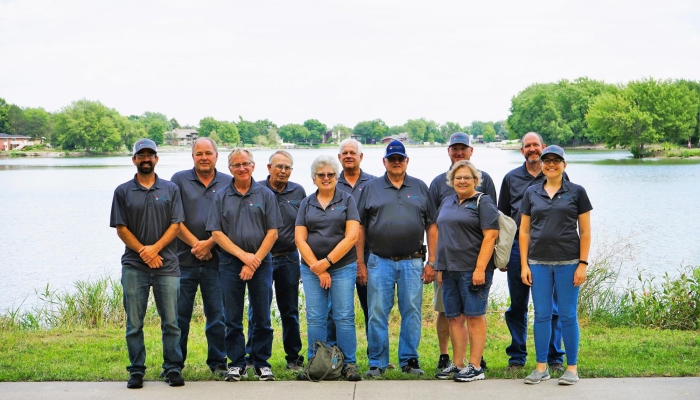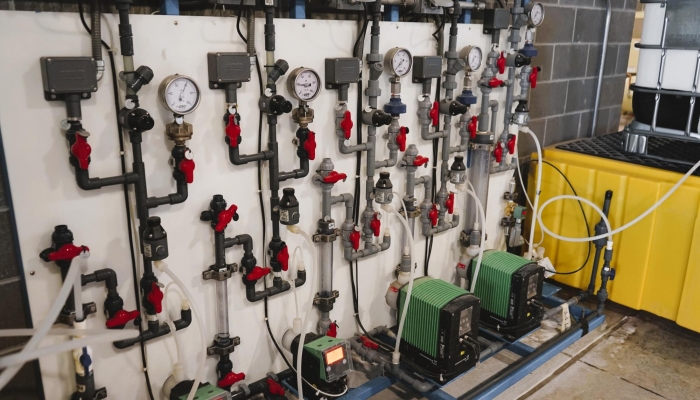On the Road Again…
Lake Hastings improvements and other projects toured by NRD directors
From water quality and quantity projects to educational partnerships, to flood control measures, members of the board of directors from the Upper Big Blue Natural Resources District toured multiple sites in the Hastings area on Friday, August 19. Board members travel to view district projects annually, each year visiting a different quadrant of the district, which stretches from Hastings to Milford and from Rising City to Milligan, including all or part of nine counties.
The tour began at Hastings Utilities, where the board members met with Marty Stange, environmental director. Stange gave a tour of the city’s state-of-the art Aquifer Storage and Recovery facility. The innovative operation reduces the amount of nitrate in the drinking water supplied to Hastings residents and neighboring communities so that it meets EPA regulations for health and safety. The $46 million facility was completed in 2018 and has been performing better than originally projected. While the project was a significant investment, Stange stressed that the cost of a traditional water treatment facility would have been close to $30 million more. The Upper Big Blue and Little Blue NRDs, as well as the Nebraska Department of Environment and Energy, and the Nebraska Department of Health were all partners on the planning and development of this facility. City of Hastings employees operate and maintain the facility.
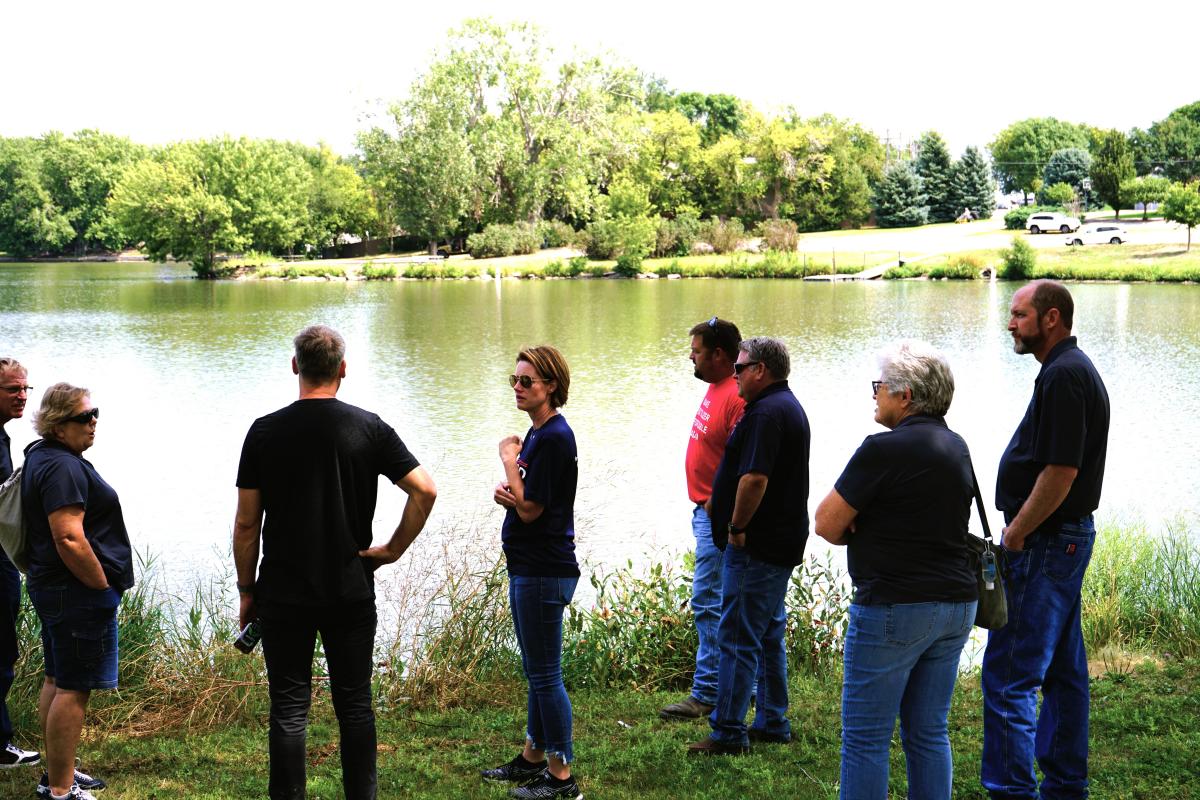
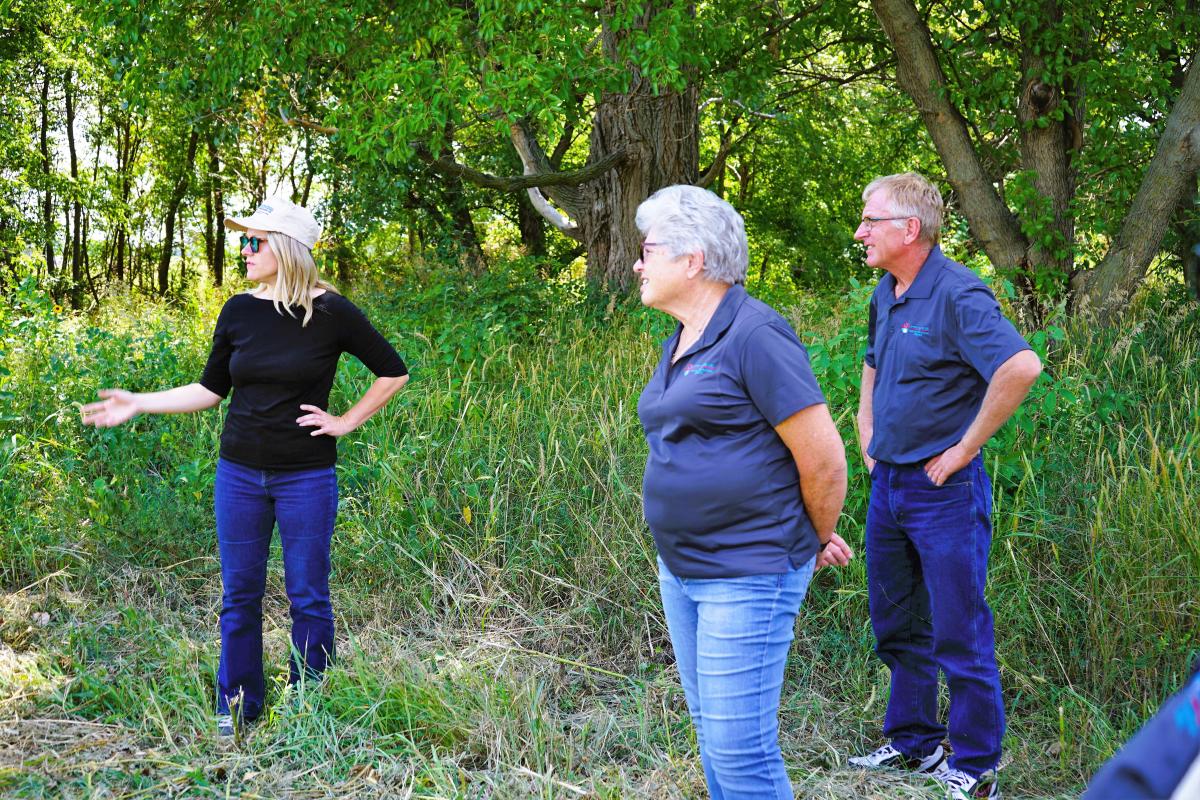
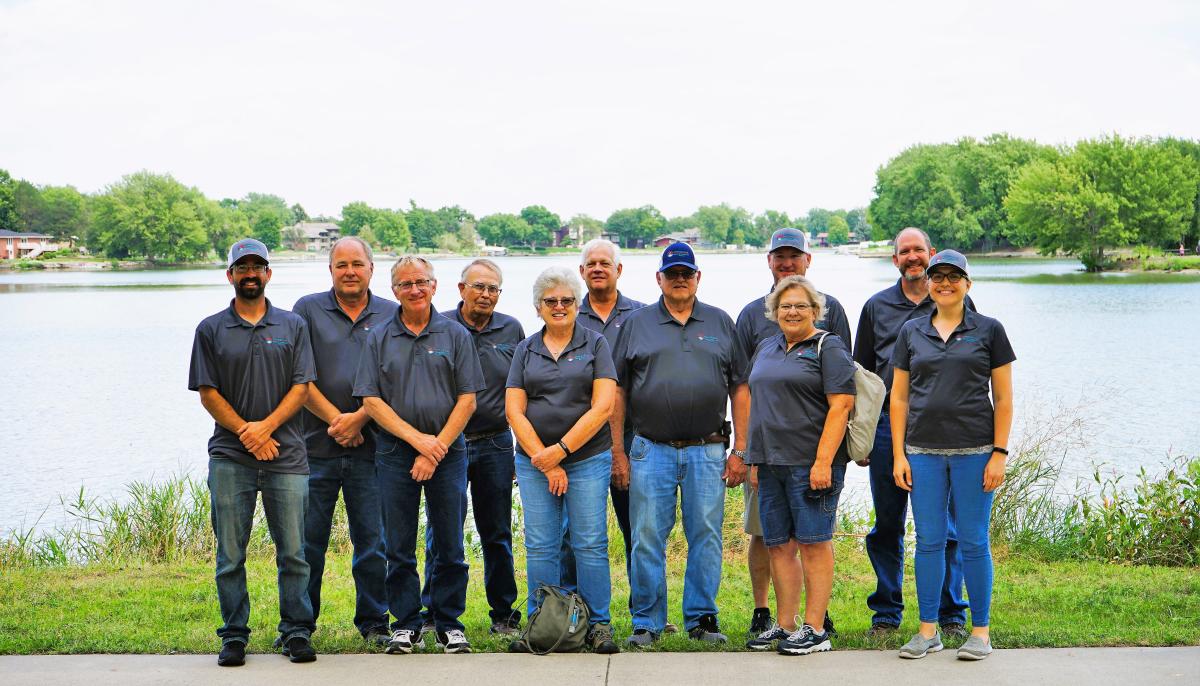
From water quality and quantity projects to educational partnerships, to flood control measures, members of the board of directors from the Upper Big Blue Natural Resources District toured multiple sites in the Hastings area on Friday, August 19. Board members travel to view district projects annually, each year visiting a different quadrant of the district, which stretches from Hastings to Milford and from Rising City to Milligan, including all or part of nine counties.
The tour began at Hastings Utilities, where the board members met with Marty Stange, environmental director. Stange gave a tour of the city’s state-of-the art Aquifer Storage and Recovery facility. The innovative operation reduces the amount of nitrate in the drinking water supplied to Hastings residents and neighboring communities so that it meets EPA regulations for health and safety. The $46 million facility was completed in 2018 and has been performing better than originally projected. While the project was a significant investment, Stange stressed that the cost of a traditional water treatment facility would have been close to $30 million more. The Upper Big Blue and Little Blue NRDs, as well as the Nebraska Department of Environment and Energy, and the Nebraska Department of Health were all partners on the planning and development of this facility. City of Hastings employees operate and maintain the facility.
Marty Stange, environmental director at Hastings Utilities, gives a tour of the Aquifer Storage and Recovery facility
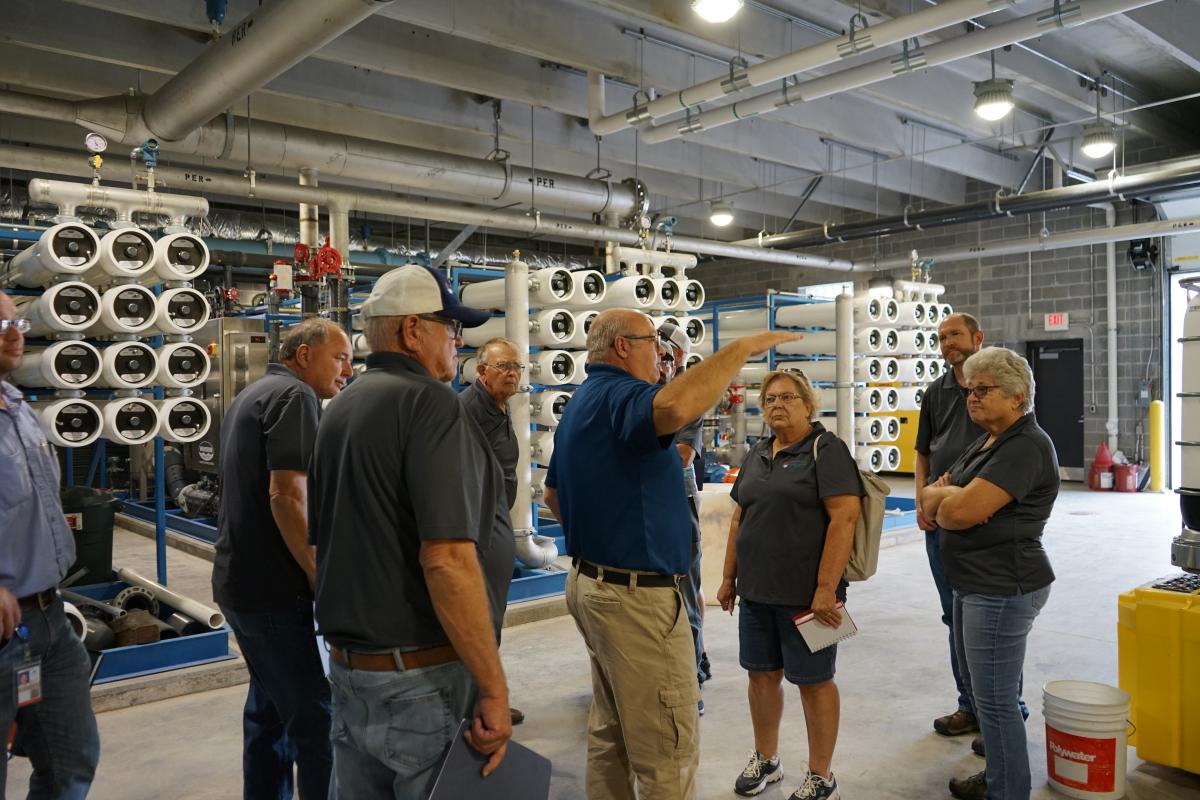

Directors and staff from the Little Blue NRD joined the group from the Upper Big Blue NRD for the next tour stop, which was a presentation on Lake Hastings watershed management. Tara Ogren, a civil and water resources engineer with the City of Hastings, spoke to the group about a long-range plan for the lake’s restoration. The lake straddles the boundary between the two NRDs and presents a unique opportunity for the entities to join forces with the City of Hastings to improve both urban and agricultural land that drains into the lake. The dam and artificial lake were constructed in 1957 for recreation and to hold non-contact cooling water from the Hastings North Denver power plant. Today, the lake may receive non-contact cooling water from North Denver operations only once or twice a year. A critical 4-square mile sub-watershed has been identified between Hastings NW Dam and Lake Hastings as having potentially the most impact on lake water quality in terms of best management practices. The lake is a favorite local spot for fishing and water activities. City of Hastings staff collect water quality samples both in-lake and during wet-weather events which will aid in watershed management planning.

Today the 70-acre lake is impaired due to excess sediment, nutrients, and due to the presence of unsafe chemical compounds from a few current and historical sources. A water quality management plan for the Lake Hastings watershed will help evaluate a variety of best management practices, from cover crops and riparian buffers on agricultural land, to streambank and shoreline stabilization, to stormwater best management practices to treat and temporarily store urban runoff as development continues around the lake. The two NRDs are partnering with the City of Hastings, Nebraska Department of Environment and Energy, and JEO Consulting to create a plan for how to restore the lake. Once the plan is complete, the city will apply for grants to implement the necessary changes.
In addition to viewing the Lake Hastings project, the board of directors also visited the high hazard dam on the northwest side of town. The structure is near the airport and not far from homes and commercial development. The “high hazard” designation has to do with the structure’s proximity to developed property, not the condition of the dam. The dam traps, slows, and redirects flood waters from a drainage area of 2,295 acres to protect the City of Hastings. The structure is operated and maintained by the Upper Big Blue NRD and was constructed in 1980. The reservoir pool is held under easement with a local landowner and is not open to the public for recreation.
While in Hastings, the board of directors also visited a native grassland planting project in a flood plain area. This vegetative improvement provides habitat for wildlife and pollinators, as well as beautification a near new residential development and a walking/biking trail operated by the city. It also plays a vital role in protecting the nearby stream from pollution, as the vegetation acts as a buffer strip to prevent contaminants from entering the waterway.
While in Hastings, the board of directors also visited a native grassland planting project in a flood plain area. This vegetative improvement provides habitat for wildlife and pollinators, as well as beautification a near new residential development and a walking/biking trail operated by the city. It also plays a vital role in protecting the nearby stream from pollution, as the vegetation acts as a buffer strip to prevent contaminants from entering the waterway.
Tara Ogren, a civil and water resources engineer with the City of Hastings, talks to NRD directors about a native planting prairie restoration project.

The group also visited the campus of Central Community College to meet with faculty and to learn more about the agricultural programs offered locally, including agribusiness and precision agriculture. The Upper Big Blue NRD provides two scholarships annually for district residents pursuing degrees at Nebraska colleges and universities in natural resources or a related field, including agriculture. The visit with faculty members allowed directors to ask questions about curriculum and how the NRD can be a better partner in preparing students for careers in agriculture and natural resources management.
The tour continued with a stop at an irrigation well in a field near Hastings. There the group met with NRD Water Resources Technician Erinn Wilkins, who demonstrated how water levels are measured each spring across the district. During March and April, Wilkins and other NRD staff measure roughly 500 observation wells throughout the district to determine an average water level change, based on a weighted change from each well. For spring 2022 water level measurements, NRD staff determined that the average groundwater level change showed a decline of 0.24 feet from the previous spring. The measurement is impacted by precipitation and irrigation use. The NRD keeps watch over the district water levels to ensure a continued abundant supply for all beneficial uses long into the future.
The final stop on the tour was in Sutton, where the directors viewed the pedestrian bridge over School Creek, which was completed in fall 2021. This community infrastructure improvement was paid for in part by the NRD and provides safe access for pedestrians crossing Saunders Avenue, the town’s main thoroughfare.
Upper Big Blue NRD General Manager David Eigenberg says that it’s important for directors to get out of the board room and explore the district from time to time. “These annual tours are a great opportunity for them to learn about the issues people face across the district, not just in their own communities. They also get to see the variety of projects that the NRD does and gain a better understanding of what they are responsible for as leaders in this district,” he said.
The tour continued with a stop at an irrigation well in a field near Hastings. There the group met with NRD Water Resources Technician Erinn Wilkins, who demonstrated how water levels are measured each spring across the district. During March and April, Wilkins and other NRD staff measure roughly 500 observation wells throughout the district to determine an average water level change, based on a weighted change from each well. For spring 2022 water level measurements, NRD staff determined that the average groundwater level change showed a decline of 0.24 feet from the previous spring. The measurement is impacted by precipitation and irrigation use. The NRD keeps watch over the district water levels to ensure a continued abundant supply for all beneficial uses long into the future.
The final stop on the tour was in Sutton, where the directors viewed the pedestrian bridge over School Creek, which was completed in fall 2021. This community infrastructure improvement was paid for in part by the NRD and provides safe access for pedestrians crossing Saunders Avenue, the town’s main thoroughfare.
Upper Big Blue NRD General Manager David Eigenberg says that it’s important for directors to get out of the board room and explore the district from time to time. “These annual tours are a great opportunity for them to learn about the issues people face across the district, not just in their own communities. They also get to see the variety of projects that the NRD does and gain a better understanding of what they are responsible for as leaders in this district,” he said.
Staff and Directors of the Upper Big Blue NRD: (L-R) Kendall Siebert, Richard Bohaty, David Robotham, Bill Stahly, Linda Luebbe, David Eigenberg, John Miller, Bill Kuehner Jr., Ronda Rich, Paul Bethune, and Chrystal Houston


